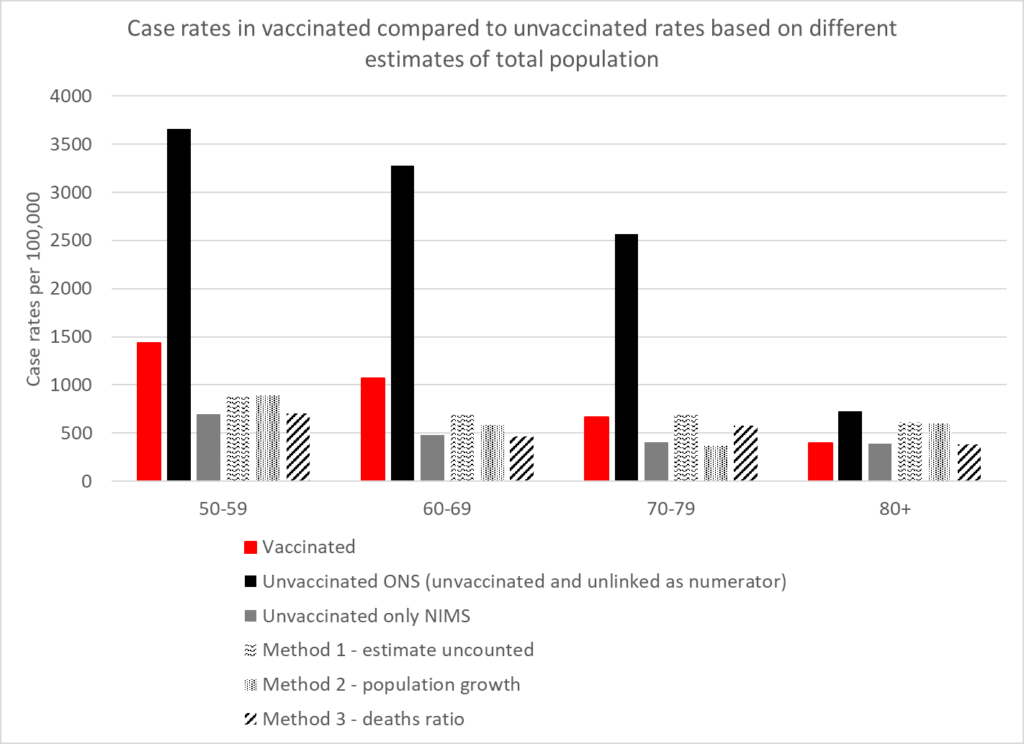
Novel population estimates support the UKHSA NIMS estimates
When studying the effect of vaccination or even the proportion of the population who have been vaccinated it is critical to know the size of the total population. Measuring an entire country’s population is a hugely difficult undertaking. Official data relies on ONS modelled estimates and the National Immunisation Management Service (NIMS) database. The latter is a count of people with an NHS number but it does not claim to be a count of the entire population. The total in NIMS is considerably higher than the ONS estimates and results in dramatically different conclusions on case rates in the unvaccinated.
Here HART presents a paper which proposes three alternative models for estimating the total population. The three models use totally different approaches and data sources and yet the results are very similar. The case rates for these models is in line with that estimate for the unvaccinated within the NIMS system and shows the ONS measure to be an outlier.
The methods used are:
Method 1: estimating the uncounted population
People not within the NHS database system still catch covid and still get tested. If we assume they have the same rates per 100,000 people as the unvaccinated we can calculate how many people there are outside of the system and add these to the NIMS totals.
Method 2: population growth
People who are not registered in the NHS will on occasion become sick enough to seek healthcare and a record will be created. The rate of growth of people with an NHS number has been incredibly steady week on week and works out at a 2.9% per annum growth rate. Using the 2011 ONS total population and this growth rate it is possible to calculate the total population.
Method 3: death ratios
Although it is possible to live in the country outside of the official systems it is much harder to die unnoticed. When there is covid around the unvaccinated may have a higher mortality rate, however, when there is little covid there are weeks when the mortality rate for the unvaccinated and vaccinated in a particular age group should be equal. It is therefore possible to use the percentage of deaths in the unvaccinated population, in a week in which unvaccinated deaths were at a minimum percentage of total deaths, to calculate the number of people in the total population.
Case rates for the ONS and NIMS are calculated using only the unvaccinated as the numerator. Including the ‘unlinked’ (not in the system) as well as the unvaccinated in the numerator and these total population estimates shows the ONS data to be an outlier.

There are now numerous age groups and regions where there are more people vaccinated than the ONS believe exist.
The ONS denominator needs to be discarded for good.

